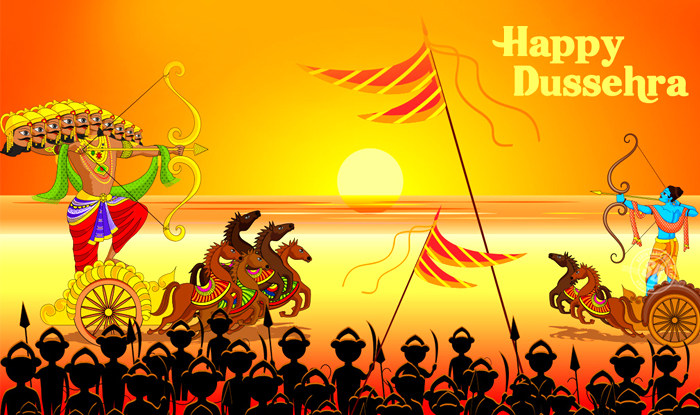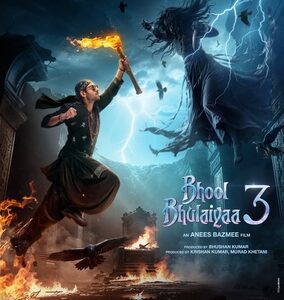
LAST DAY OF NAVARATHRI
For the people of the Telugu-speaking states of Andhra Pradesh and Telangana, Bharat-Dussehra or Vijayadashami holds a proud place in their hearts. An occasion of tremendous fervor-imbued mythology, tradition, and community spirit, and one of the most monumental affairs of the region, Bharat-Dussehra has had a vibrant and significant representation in the social and cultural fabric of Andhra Pradesh and Telangana.
Dussehra is celebrated in Andhra Pradesh and Telangana as the victory of the Goddess Durga over Mahishasura, the demon buffalo, which has been considered an important representation of the ultimate good triumphing over evil. The form of the festival resonates very deeply within the collective cultural psyche of the Telugu people, who have always respected the divine feminine principle represented by Durga.
It is also the final night of the nine nights of Navaratri pujas in which the goddess is worshiped devotedly by her believers. On the last Vijayadashami day, pointing towards the victory but rising development, is full of hope and promise.
Rituals and Celebrations
This state has loads of unusual rituals and ceremonies to celebrate. All houses are spotlessly clean, blossoming with flowers, and rangolis in colors are painted on the floor. Goddess Durga’s idols are worshiped, and there is proper elaboration of all pujas and it is done with great devotion.
Bommai Kolu” or “Golu” is unique to Andhra Pradesh and Telangana during Dussehra. Dolls range from deities to mythological figures to scenes of daily life kept on the steps or platforms. It’s a festival where families used to visit each other’s homes to see the “Bommai Kolu,” meaning community sharing festival joy.
Specialty of Jammi and Pala Pitta
Food takes a very significant position on Dussehra. While making traditional food is a routine affair in families, for Dussehra, even the holy Jammi is used. More sacred are the leaves of this tree and are given along with dishes as it is believed that the goodness of the leaves can bring prosperity. Even Pala Pitta, that sweet made of rice flour and jaggery, is loved by all.
In all such houses, they used to make sweet dishes like “Gulab Jamun,” “Ladoo,” and “Puran Poli,” so all the houses were full of festive fervor with fragrant smells, but such sweets were enjoyed not only by the family members but also were sent to the neighbors and friends from all walks of life and hence bonded the community further.
Community Celebrations and Cultural Events
This is, more than that, supplemented by colored processions and cultural programs in the form of a more celebration-festive spirit of Andhra Pradesh and Telangana. Local organisations along with most of the temples organize events wherein people come together in a jovial kind of celebration to perform traditional dances, like “Kolattam” and “Dandiya”.
It is a spectacle of much ballyhoo in many small towns and villages where programs are held on stages as well as in rallies comprising songs and dances that lay out the episodes of Ramayana and Mahabharata. These entertain, but at the same time teach the young ones about their culture heritage.
Significance of Ravana Vadha
“Ravana Vadha” is a mythological saga in the Hindu epic Ramayana; Lord Rama kills Ravana-ten-headed king of Lanka. It symbolizes the triumph of good over evil; once Ravana had abducted Rama’s wife Sita, which made her husband Rama along with her brother Lakshmana and the devoted Hanuman take battle against Ravana.
This battle has portrayed different themes, such as duty or dharma, devotion, and the consequence of pride. Confident arrogant Ravana with all the powers and wisdom was crushed down by his arrogance and evil deeds. This tale represents the glory of good over evil and also shows righteousness, as well as knowing that it will triumph at last. The other festival celebrated in many parts of India is Dussehra, where the effigy of Ravana gets burnt symbolizing the victory of good over evil.
Spiritual Significance and Slokas
All families also recite slokas and hymns on the eve of Dussehra to take the blessings from the Goddess Durga. One of the most significant slokas for this day is as follows:
“Shami shamayethe pāpam, Shami shātrhu vināshanam, Arjunasya dhanurdhari, Rāmasya priyadarshani.”
This shloka aims toward the importance of the strength of Shami, which cleansed sins and enemies. It reminds us of the powers and protections the divine bestowed upon its devotees.
All these rituals are culminated with some grand procession to the water bodies close by, where idols of Goddess Durga are immersed to mark the send-off of the goddess after her sojourn with her devotees. Such immersion is characterized by songs, dances, and bright celebrations where the community bids goodbye to the goddess.
Conclusion
It has turned out to be a festival over Dussehra in Andhra Pradesh and Telangana; it has changed into an effervescent cultural expression. The Telugu people get a chance not only to celebrate their heritage but further bond together through rituals, food, and shared celebrations. The festival inspires hope and renewal by talking about good over evil and reminding everyone of virtues like strength and unity. And then, one moves toward a new future with renewed hope and bubbly delight in the hearts as Dussehra goes merrymaking.




